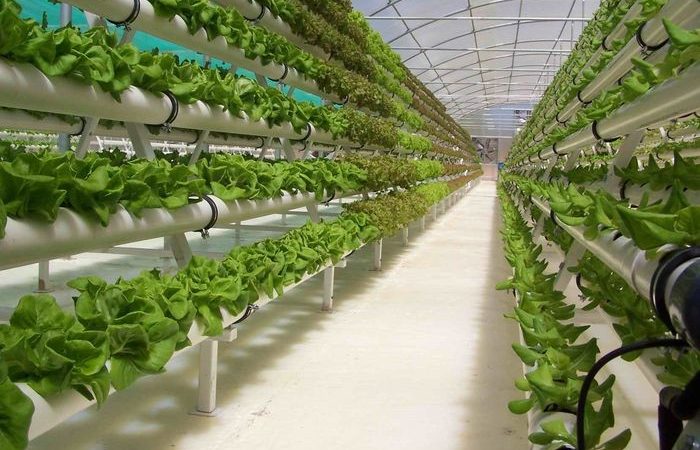Hydroponics, a soil-less cultivation technique, has emerged as a transformative approach in horticulture, offering precise control over plant growth parameters. While hydroponics significantly enhances yield potential and resource efficiency, its implementation requires careful consideration of technical, economic, and environmental factors. This article critically examines various hydroponic techniques suitable for horticultural crops, supported by diagrams and images illustrating their operational mechanisms.
Key Hydroponic Techniques
- Nutrient Film Technique (NFT)
NFT involves a continuous flow of a nutrient-rich solution over plant roots, supported in a slightly sloped channel. This method is predominantly used for leafy greens such as lettuce, spinach, and herbs.
Diagram: A cross-sectional schematic illustrating nutrient flow, root placement, and system components.
Critical Analysis:
- Advantages: Efficient water and nutrient usage, oxygen-rich root environment, and rapid crop cycles.
- Challenges: Susceptibility to system failures (e.g., pump malfunction) leading to root dehydration.
- Deep Water Culture (DWC)
In DWC, plant roots are submerged in a continuously oxygenated nutrient solution. This system is widely adopted for crops like strawberries, tomatoes, and cucumbers.
Image: A visual representation of a DWC setup with aeration components.
Critical Analysis:
- Advantages: Constant nutrient availability, ease of maintenance, and suitability for large-scale production.
- Challenges: Risk of oxygen deficiency if aeration fails, leading to root rot.
- Aeroponics
Aeroponics suspends plant roots in an air chamber, periodically misting them with a nutrient solution. It is particularly effective for high-value crops such as strawberries and medicinal herbs.
Diagram: A depiction of an aeroponic chamber showing misting nozzles and suspended roots.
Critical Analysis:
- Advantages: Maximum oxygen exposure, rapid nutrient absorption, and minimal water usage.
- Challenges: High dependency on technology, vulnerability to system malfunctions, and increased initial costs.
- Drip System Hydroponics
A controlled flow of nutrients is delivered to plant roots through a drip emitter, making this system ideal for fruiting crops like bell peppers, tomatoes, and eggplants.
Image: A field application of drip hydroponics showing tubing networks.
Critical Analysis:
- Advantages: Precise nutrient and water management, adaptability to various crops, and scalability for commercial use.
- Challenges: Risk of clogging in drip lines, requiring regular maintenance.
- Wick System
A passive hydroponic method that uses capillary action to transport nutrients from a reservoir to plant roots. It is commonly used for small-scale operations with herbs and leafy greens.
Diagram: A labelled structure illustrating nutrient movement through the wick system.
Critical Analysis:
- Advantages: No electricity requirement, simple setup, and low maintenance.
- Challenges: Limited scalability, less efficient nutrient delivery, and slower plant growth compared to active systems.
Comparative Analysis of Hydroponic Systems
|
System |
Water Efficiency |
Maintenance |
Cost |
Suitability |
|
NFT |
High |
Moderate |
Medium |
Leafy greens |
|
DWC |
High |
Low |
Medium |
Strawberries, tomatoes |
|
Aeroponics |
Very High |
High |
High |
Herbs, high-value crops |
|
Drip |
Moderate |
Moderate |
Medium |
Fruiting crops |
|
Wick |
Low |
Low |
Low |
Small-scale herbs |
Conclusion
Hydroponic techniques in horticulture present an innovative solution to modern agricultural challenges, offering higher efficiency and sustainability. However, each method comes with unique advantages and limitations that must be critically evaluated based on economic viability, technical feasibility, and environmental sustainability. Future research should focus on optimizing nutrient solutions, energy efficiency, and integrating automation to enhance hydroponic adoption on a larger scale.

